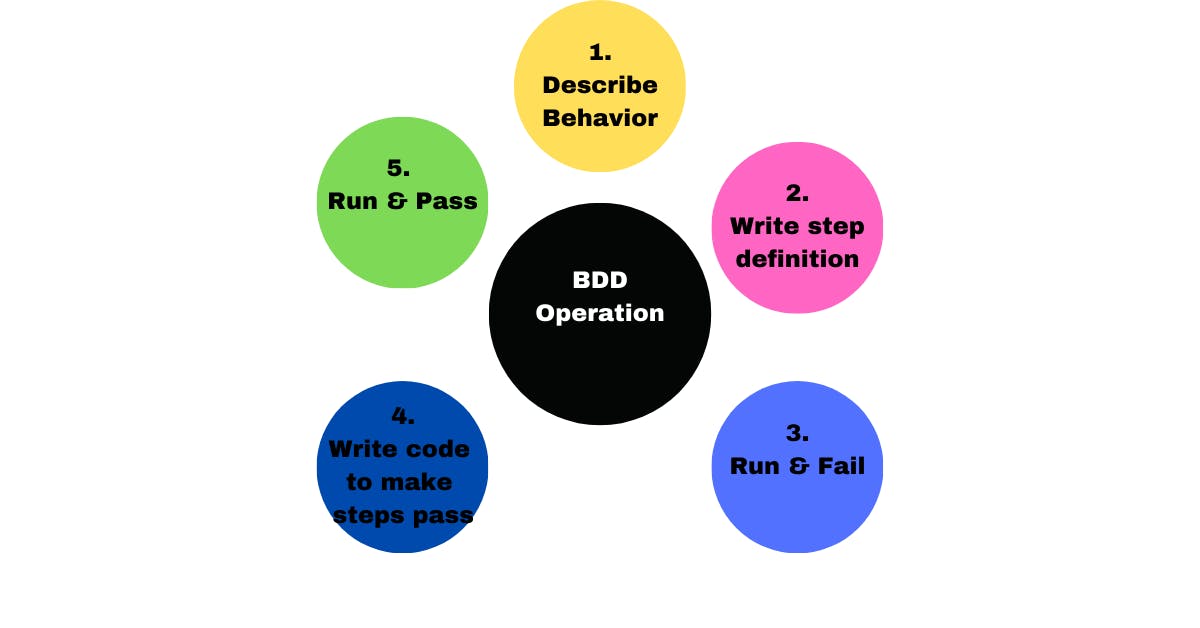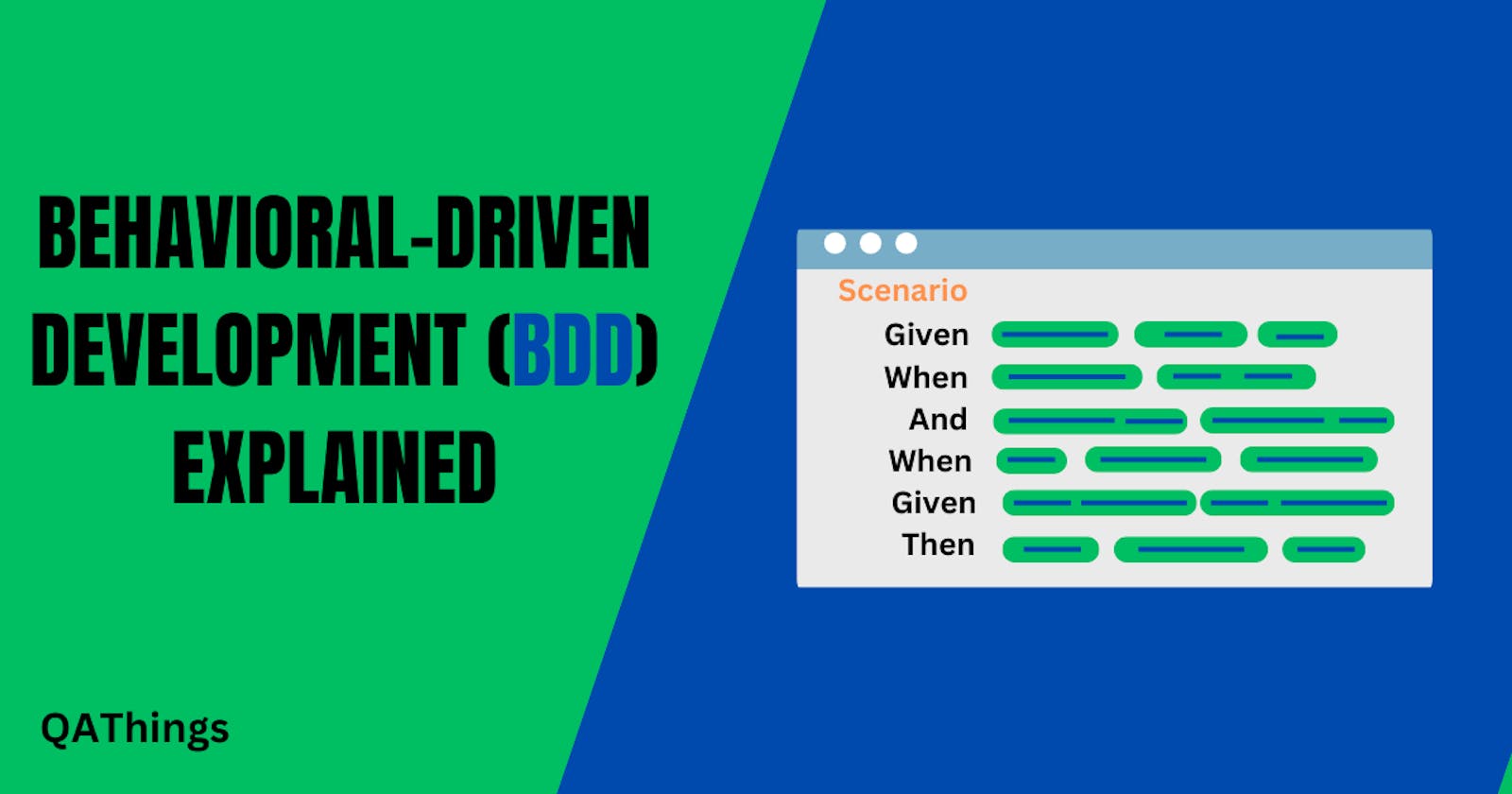In the ever-evolving landscape of software development, methodologies play a crucial role in shaping the way teams collaborate and deliver high-quality products. One such methodology that has gained prominence is Behavioral-Driven Development (BDD).
In this article, we will delve into the core concepts of BDD, its advantages, and how it can be seamlessly integrated into the software development process.
Understanding BDD
What is BDD?
Behavioral-Driven Development, commonly known as BDD, is an agile software development methodology that encourages collaboration between developers, quality assurance (QA) professionals, and non-technical stakeholders. It focuses on the behavior of the software from the end user's perspective, fostering a shared understanding of the desired outcomes.

BDD focuses on:
Where to start in the process
What to test and what not to test
How much to test in one go
What to call the tests
How to understand why a test fails
Key Principles

Test-driven development is a software-development methodology which essentially states that for each unit of software, a software developer must
Define a test set for the unit first;
Make the tests fail;
Then implement the unit;
Finally verify that the implementation of the unit makes the tests succeed.
1. Collaboration
BDD emphasizes collaboration among cross-functional teams. Developers, QA professionals, and business stakeholders work together to define and understand the expected behavior of the system.
2. Plain Language Specifications
BDD relies on plain language specifications that are easily understandable by both technical and non-technical team members. This promotes clarity and reduces ambiguity in requirements.
3. Automated Testing
Automation is a cornerstone of BDD. It encourages the creation of automated tests based on the defined behavior. These tests serve as living documentation, ensuring that the software continues to meet the expected criteria.
Behavioral specifications
BDD specifies that business analysts and developers should collaborate in this area and should specify behavior in terms of user stories, which are each explicitly written down in a dedicated document. Each user story should, in some way, follow the following structure:
- Title
- An explicit title.
- Narrative
- A short introductory section with the following structure:
- As a: the person or role who will benefit from the feature;
- I want: the feature;
- so that: the benefit or value of the feature.
- Acceptance criteria
- A description of each specific scenario of the narrative with the following structure:
- Given: the initial context at the beginning of the scenario, in one or more clauses;
- When: the event that triggers the scenario;
- Then: the expected outcome, in one or more clauses.
BDD does not have any formal requirements for exactly how these user stories must be written down, but it does insist that each team using BDD come up with a simple, standardized format for writing down the user stories which includes the elements listed above.
BDD Behavioral specifications Examples
Example 1: New Customer Registration
Title: Streamlined Registration Process
Narrative: As a potential customer, I want a simplified registration process, so that I can quickly access and utilize the platform.
Acceptance Criteria: Scenario 1: Given that a new customer navigates to the registration page, When they provide valid details and submit the form, Then they should be successfully registered and redirected to the platform.
Scenario 2: Given that a new customer attempts to register without providing mandatory details, When they submit the incomplete form, Then they should receive an error message prompting them to fill in the required information.
Example 2: E-commerce Product Search
Title: Enhanced Product Search Functionality
Narrative: As an online shopper, I want an advanced search feature, so that I can quickly find specific products and make informed purchasing decisions.
Acceptance Criteria: Scenario 1: Given that a user is on the product search page, When they enter specific keywords related to the desired product, Then they should see a list of relevant products matching the search criteria.
Scenario 2: Given that a user enters incorrect or irrelevant keywords, When they initiate the search, Then they should receive a message indicating no matching products found.
Example 3: Task Management System
Title: Task Priority and Deadline Setting
Narrative: As a project manager, I want the ability to prioritize tasks and set deadlines, so that I can efficiently manage project timelines.
Acceptance Criteria: Scenario 1: Given that a project manager is viewing the task list, When they mark a task as high priority, Then the task should be prominently displayed and sorted accordingly.
Scenario 2: Given that a project manager creates a new task, When they set a specific deadline for the task, Then the system should track and display the deadline associated with that task.
Example 4: Social Media Posting
Title: Scheduled Post Publishing
Narrative: As a social media manager, I want the ability to schedule posts in advance, so that I can maintain a consistent and strategic posting schedule.
Acceptance Criteria: Scenario 1: Given that a social media manager is creating a new post, When they select a future date and time for publishing, Then the post should be automatically published on the specified date and time.
Scenario 2: Given that a social media manager has a post scheduled for publishing, When they need to make changes to the content or schedule, Then they should be able to edit the scheduled post without any issues.
Example 5: Expense Tracking Application
Title: Receipt Upload and Categorization
Narrative: As a user of an expense tracking app, I want the ability to upload receipts and categorize expenses, so that I can easily track and manage my financial transactions.
Acceptance Criteria: Scenario 1: Given that a user navigates to the receipt upload section, When they upload a valid receipt image, Then the system should process and associate the receipt with the user's account.
Scenario 2: Given that a user has uploaded multiple receipts, When they categorize each expense under specific predefined categories, Then the system should accurately organize and display the expenses in the designated categories.
| BDD Process Steps | Description |
| 1. Collaborative Planning | Teams consisting of developers, QA professionals, and business stakeholders collaborate to define features and user scenarios. |
| 2. Writing Feature Files | Plain language specifications, often in Gherkin syntax, are written in feature files to describe the desired behavior of the software. |
| 3. User Stories and Scenarios | User stories are formulated using the "As a, I want, so that" structure. Scenarios within feature files detail specific instances. |
| 4. Acceptance Criteria | Each scenario includes acceptance criteria in "Given, When, Then" format, defining the initial context, triggering event, and outcomes. |
| 5. Automation of Tests | Automated tests are created based on the defined scenarios, serving as living documentation and ensuring ongoing verification. |
| 6. Continuous Collaboration | Regular collaboration among team members is maintained, ensuring a shared understanding of features and their expected behavior. |
| 7. Integration with Development Process | BDD seamlessly integrates with the development process, with developers using the defined scenarios to guide the implementation. |
| 8. Early Issue Detection | Automated tests facilitate early detection of issues, allowing teams to address and resolve them before they escalate. |
| 9. Living Documentation | BDD tests serve as living documentation, providing an up-to-date reference for the expected behavior of the system. |
| 10. Iterative Development | The process is iterative, with continuous refinement of scenarios and tests as the software evolves and requirements change. |
This table provides a concise overview of the key steps and aspects of the Behavioral-Driven Development process.
Conclusion
In conclusion, Behavioral-Driven Development (BDD) emerges as a dynamic and collaborative methodology that transcends traditional software development approaches.
The structured format of BDD, encapsulated in the "As a, I want, so that" user story structure and the "Given, When, Then" acceptance criteria, serves as a guiding light for both technical and non-technical team members. This format not only enhances clarity in requirements but also lays the foundation for automated testing, which becomes an integral part of the development lifecycle.
As teams embrace BDD, they find themselves equipped with specialized tools that support the entire TDD workflow, offering efficiency gains and aiding in the creation and execution of unit tests.
In essence, Behavioral-Driven Development stands not just as a methodology but as a philosophy that transforms how teams conceptualize, communicate, and deliver software. As technology continues to advance, the principles of BDD provide a robust framework for navigating the complexities of software development, ensuring not only the creation of high-quality products but also the cultivation of a collaborative and forward-thinking development culture.
